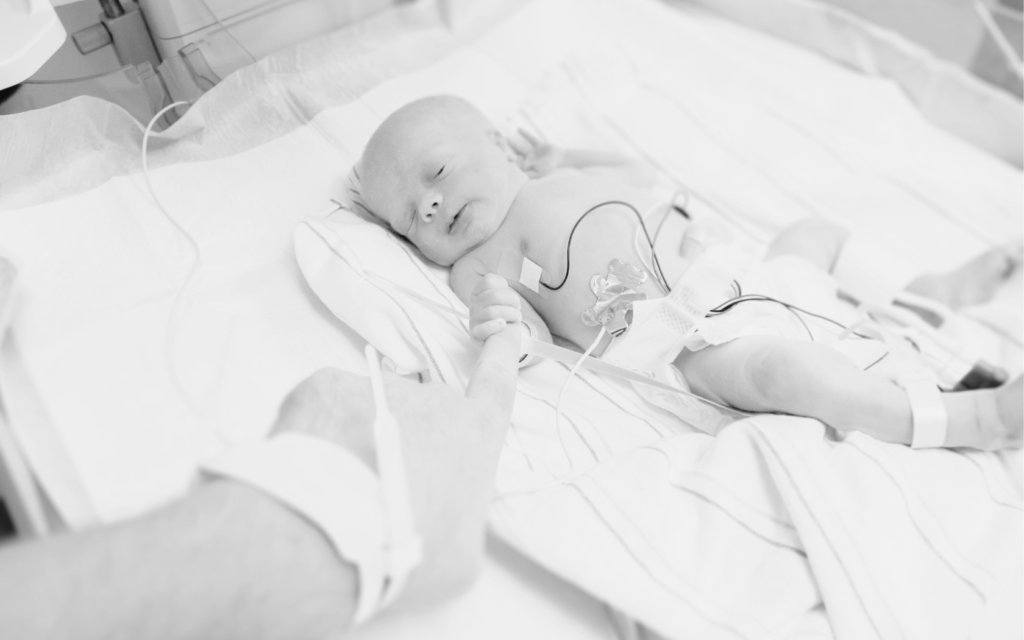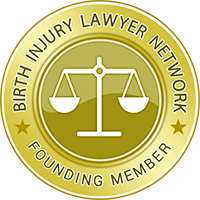Uterine rupture during labor is one of the most terrible accidents that can happen during birth. But is it really an “accident”? Not always, according to research. This fifty-three-year-long study found that most cases of ruptured uterus are avoidable.
When ruptures do happen, there’s a good chance negligence is involved. One of the biggest culprits is the mistakes that doctors and nurses make with Pitocin. Those accounted for 12.5% of uterine ruptures.
If you or your child were injured from a ruptured uterus, tell us about your case. You may be eligible for compensation.

What is Uterine Rupture During Labor?
A ruptured uterus is a rare but dangerous birth complication. It occurs when the wall of the uterus tears. It’s more common for it to happen during labor, and especially to women who’ve had a C-section.
A uterine rupture during labor can cause severe injuries or even death. So it’s considered an obstetric emergency that requires immediate medical intervention.
Thankfully, uterine ruptures only happen to less than 1% of women giving birth. For women who have had prior uterine surgery such as cesarean section or myomectomy (surgical removal of fibroids), that number climbs to 1.5%. However, the risk is greater for women who have had multiple C-sections (4%).
Uterine Rupture & Birth injuries
Here’s why a uterine rupture during birth can be so dangerous:
- When the uterine wall ruptures, it can result in the fetus being expelled into the abdominal cavity.
- This can lead to severe bleeding, which puts both the mother and baby at risk.
- The woman can go into hemorrhagic shock. This is a life-threatening condition where there’s not enough blood flow to vital organs.
- If the baby ends up in the mother’s abdominal cavity, the umbilical cord might become compressed. Or, blood flow to the placenta can get disrupted. This can result in oxygen deprivation for the baby. If doctors don’t act fast, the baby might die from lack of oxygen.
- Emergency medical intervention has to be quick as lightning because the window for preventing serious complications is narrow. A delay in diagnosis or treatment can make the outcome much worse for both mother and baby.
Apart from hemorrhage, uterine rupture can lead to other maternal complications. These include infection, organ damage, and the need for the uterus to be removed. However, most mothers survive it, as long as doctors quickly control the bleeding.
In babies, uterine rupture during labor can cause birth injuries such as:
- A brain injury called Hypoxic-Ischemic Encephalopathy (HIE)
- Fractures and lacerations
- Seizures
- Respiratory problems because the rupture caused the baby to be born early
- Organ dysfunction or failure because of lack of oxygen
- Cerebral palsy
- Developmental delays
- Permanent disabilities because of brain damage

Why Do Uterine Ruptures Happen During Labor?
Uterine ruptures often occur during labor because the uterus is under significant stress from contractions. Many contributing factors can cause that to happen. Some of the most common are:
- The woman had prior C-sections or surgeries to remove fibroids. The scar tissue from these surgeries may weaken the uterine wall.
- The fetus is very large (macrosomia).
- The woman is giving birth to multiple babies.
- Prolonged labor has put a lot of stress on the uterine wall.
- Doctors used medications to induce or speed up labor (such as oxytocin). This can make contractions more frequent and intense.
- The woman was born with a uterine anomaly, such as a bicornuate or septate uterus.
- Blood flow to the uterus is compromised because the woman has certain medical conditions.
How to Prevent Uterine Rupture
In most cases, adequate medical intervention can keep uterine rupture from happening. Doctors aren’t fortune tellers who can foresee every single case. But they can monitor a woman during pregnancy and see whether she’s at risk. Then they can take measures to lower the woman’s risk.
Some of the most important strategies for preventing uterine rupture during labor include:
- Opting for a C-section when the woman has had several C-sections, surgeries, or scarring.
- Visiting the doctor throughout pregnancy so doctors can monitor maternal health, fetal growth, and the position of the placenta.
- If a woman wants to consider a vaginal birth after cesarean (VBAC), doctors need to discuss all the risks and benefits with her. It can be a safe option, but it does raise the risk of uterine rupture.
- Monitoring the woman and baby during labor. Doctors should always be on the lookout for warning signs of rupture. These signs include vaginal bleeding, abnormal fetal heart rate, and severe abdominal pain.
The primary responsibility for preventing uterine rupture lies with doctors. They’re the ones who should understand a woman’s medical background and keep a watchful eye on her and the baby during labor.
This isn’t to undermine the importance of mothers adhering to their doctor’s advice. But since uterine rupture is such a serious concern, doctors are the ones who end up making the crucial decisions that require a lot of careful assessment.
For example, let’s look at a scenario in which a woman has had a previous C-section, and now wants to attempt a vaginal birth. Doctors would need to examine her medical history and current health before green-lighting a VBAC. If it seems safe to do so, she might undergo a “trial of labor”. But she’s still at risk for uterine rupture, so she needs to labor under the care of a specially-trained medical team.
The woman begins labor and everything seems normal…until it doesn’t. Sensing potential complications, the doctor swiftly intervenes, opting for a cesarean section. A possible rupture was avoided, and mother and baby are in good health.
Uterine Rupture and Medical Malpractice
Unfortunately, the scenario above could turn out much differently had the doctor not monitored his patient, known her history, or acted fast when complications arose. That would be a recipe for disaster—and it could constitute medical malpractice.
When it comes to preventing uterine rupture during labor, or the complications that stem from it, time is of the essence. Just a few minutes of delay can injure the mother or cause a baby to end up with a lifelong condition.
One of the most common conditions that babies end up with after a uterine rupture is cerebral palsy (CP). CP is a motor disorder that occurs because a certain part of the baby’s brain is damaged, usually from oxygen deprivation. The legal team at Hampton & King has recovered upwards of $1 million in cases where mishandled ruptured uterus led to cerebral palsy.

Can I File a Lawsuit for Uterine Rupture?
Were you or your child injured because of a mishandled uterine rupture, or a rupture that could have been prevented? If so, you may be able to hold them responsible. You could file a birth injury lawsuit seeking damages.
However, you’ll need to determine whether you have a viable case first. Contact our expert lawyers. They’ll help you find out if negligence played a role in the injury, and what legal steps you may take.












